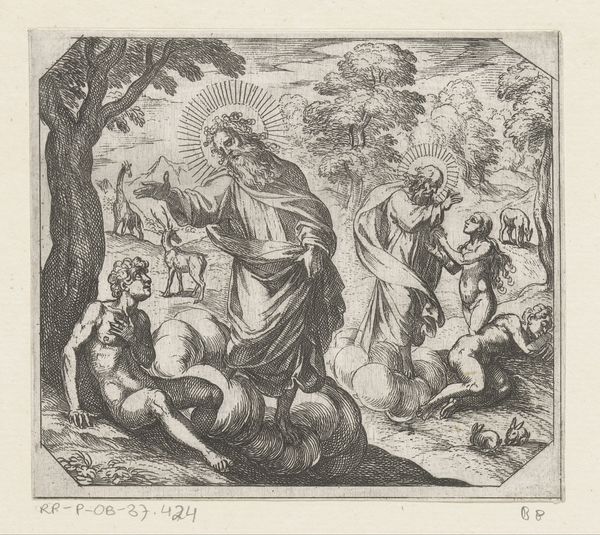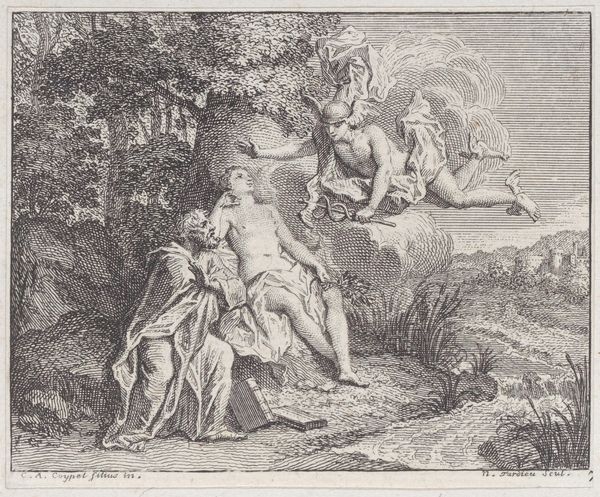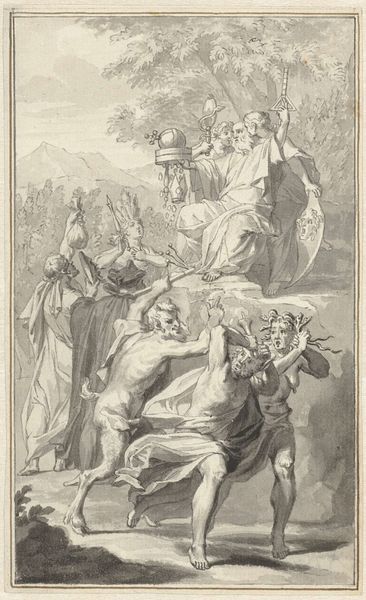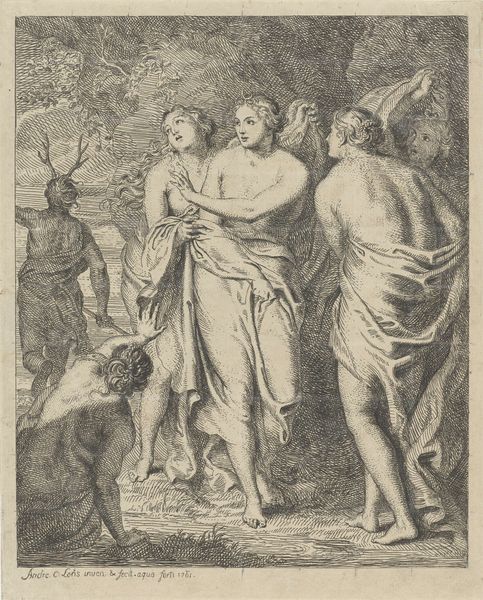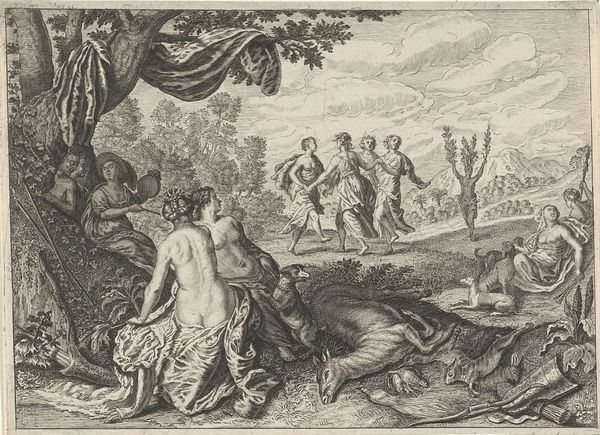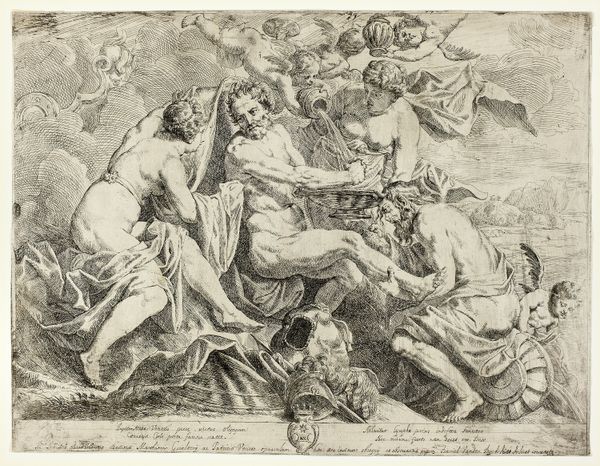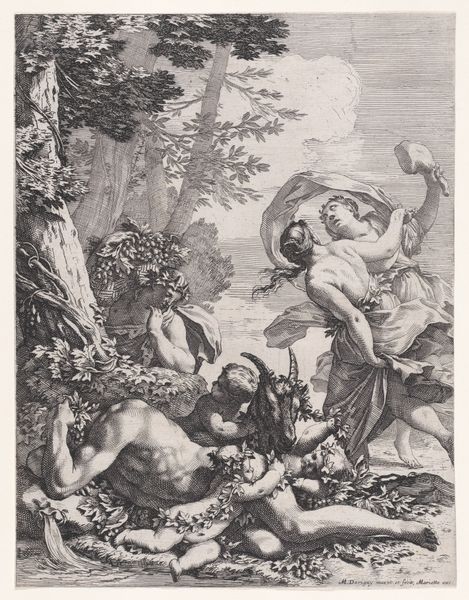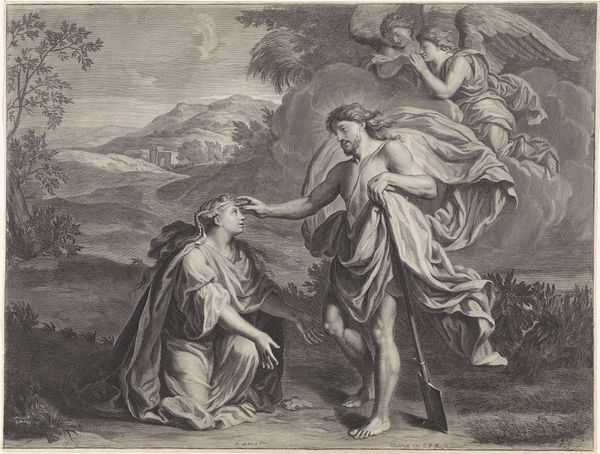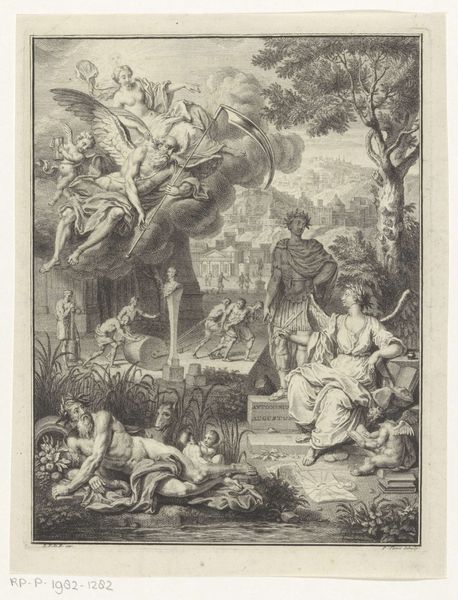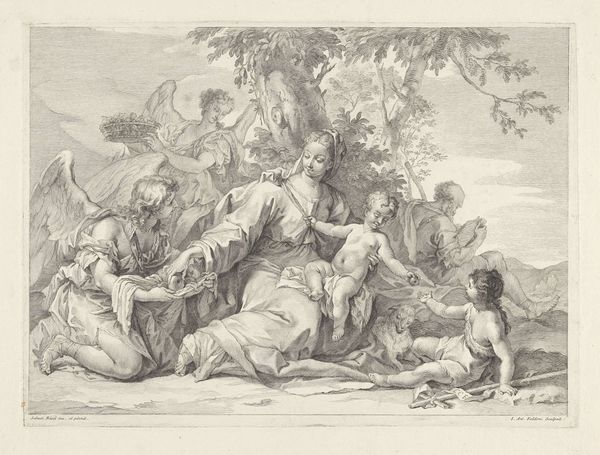
drawing, print, paper, ink, pen
#
drawing
#
narrative-art
# print
#
landscape
#
charcoal drawing
#
figuration
#
paper
#
ink
#
ink drawing experimentation
#
classicism
#
pen
#
history-painting
#
academic-art
Dimensions: 259 × 425 mm
Copyright: Public Domain
Curator: Well, hello there! This artwork on display here at The Art Institute of Chicago is entitled *Ulysses and Nausicaa*. It is undated, and comes to us from the hand of Giovanni Battista Cipriani in pen, ink, and wash on paper. Editor: My initial feeling is of lightness, airiness. The monochrome gives it an almost ethereal quality. The lines are so delicate, it’s as though a memory is being rendered. Curator: Cipriani's piece invites us to think about the visual codes of hospitality and gender roles within the *Odyssey*. Ulysses, shipwrecked and vulnerable, finds himself in the land of the Phaeacians. Nausicaa, the princess, discovers him and, defying social norms, offers him aid. Cipriani makes a deliberate statement by portraying a narrative where a woman is central. Editor: Yes, this moment resonates deeply. Note how the floating figure above seems to offer an archetypal blessing on their interaction. Perhaps it’s a suggestion of a greater, guiding force. Is it Athena herself, pulling the strings in Ulysses’ favor? Curator: It's important to view Cipriani's work in relation to the larger societal expectations placed upon women and heroes alike, in this moment in history and within the ancient texts, exploring themes of vulnerability and power dynamics. His decision to center Nausicaa's compassionate choice challenges these gendered constraints. Editor: And observe how, despite being shipwrecked and naked, Ulysses is ennobled here, posed in supplication, but radiating a classical ideal of masculinity and nobility. We almost forget his desperation, reading it more as respectful deference to his rescuer. The objects scattered around—her clothes and playing accoutrements—suggest that she may need to reconsider her place as the 'dutiful daughter.' Curator: Cipriani's composition pushes us to reconsider how this meeting affects the gendered power dynamics of Homeric narratives. Does Ulysses' presence ultimately undermine Nausicaa’s agency, or does her initial act of kindness set the stage for the hero's subsequent journey, rewriting conventional tropes? Editor: I appreciate that the narrative invites this continued questioning of gendered expectations. It makes us want to go back and question everything in the original text. It also pushes us to consider the role of images, even drawings, in continuing such discussions. Curator: Precisely, engaging with a single image from Cipriani opens up endless conversations about how visual art functions as a powerful catalyst for change. Editor: Absolutely. It enriches my understanding to reconsider these visual elements together, not just as an illustration of the myth, but as a cultural symbol for an era in flux.
Comments
No comments
Be the first to comment and join the conversation on the ultimate creative platform.
